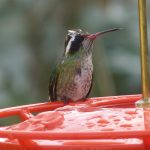his captivating hummingbird species, often seen in Arizona, is renowned for its remarkable flight skills and long migratory journeys. The rufous hummingbird stands out with its vibrant plumage and dynamic behaviors. Here’s everything you need to know about this feathered jewel.
Classification
The rufous hummingbird, scientifically named Selasphorus rufus, was first described by Johann Friedrich Gmelin in 1788. Originally placed under the genus Trochilus, it has now found its place in the genus Selasphorus. The species name “rufus” is Latin for “red,” reflecting its rich coloration.
Physical Features
Adult males showcase a striking white breast, rufous face, flanks, and tail, with an iridescent orange-red throat patch, or gorget. Some males have hints of green on their backs. Females are slightly larger, sporting green and white feathers with specks of iridescent orange on their throats, alongside a dark tail with white tips. Weighing between 2–5 grams and measuring 7–9 cm in length, these tiny birds are a marvel of nature’s design.
Home and Travel
Rufous hummingbirds populate western North America, from southern Alaska to California during the breeding season. They can often be found in Arizona during their migratory phases. They migrate through the Rocky Mountains and nearby lowlands from May to September, typically wintering in Mexico after an astonishing journey of over 2,000 miles.
Habits and Life Cycle
Diet and Energy
These hummingbirds feed on flower nectar using a long, extendable tongue, and catch insects on the wing. They feed frequently by day and enter a torpid state at night to preserve energy. Being small, they face threats from larger insect-eating birds and creatures.
Flight Mechanism
Studies reveal that rufous hummingbirds generate lift mostly through wing downstrokes while hovering. During fasting, they oxidize fatty acids for metabolism but swiftly switch to carbohydrates after feeding. Their flight patterns and energy utilization showcase their incredible adaptability.
Territorial Behavior
Both male and female rufous hummingbirds display territorial behavior, albeit defending different types of territories. Males dominate areas with dense flower concentrations, engaging in frequent confrontations. Females, pushed into sparser areas, compensate with longer wings for more efficient flight.
Reproduction
Rufous hummingbirds breed in open spaces, mountainsides, and forest edges. The females build nests in sheltered spots, often choosing shrubs or conifers. Males do not form pair bonds and mate with several females.
Conservation
The rufous hummingbird’s status was uplisted to “Near Threatened” in 2018 due to its dependency on insect prey and the decline in insect populations from pesticide use and intensified agriculture. Climate change also poses a risk as it disrupts flower bloom timings, affecting their feeding schedules during the breeding season.

